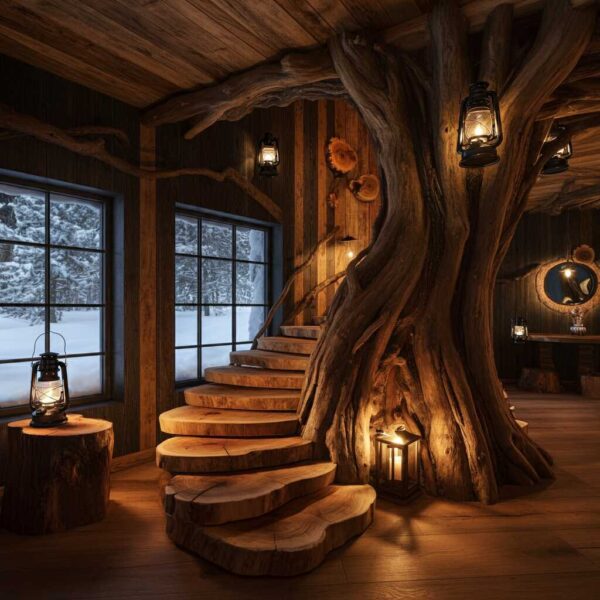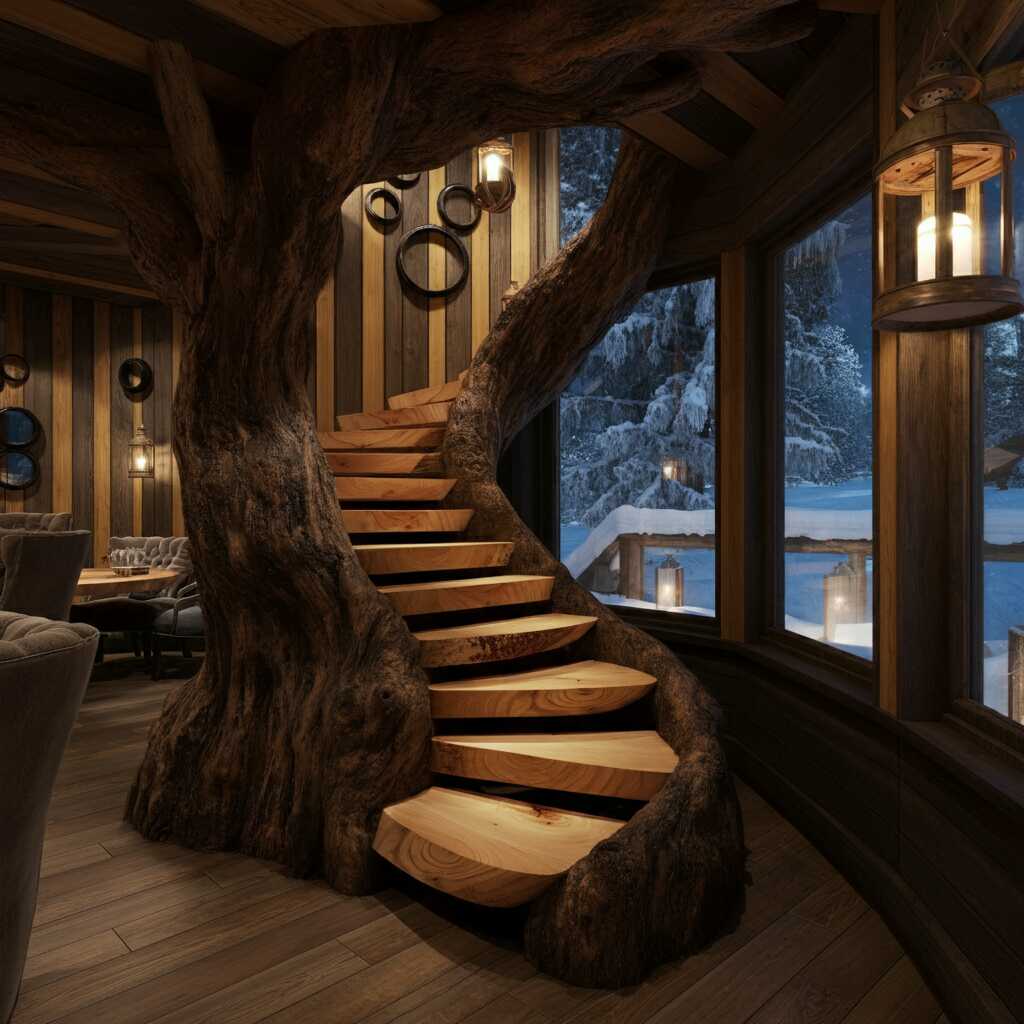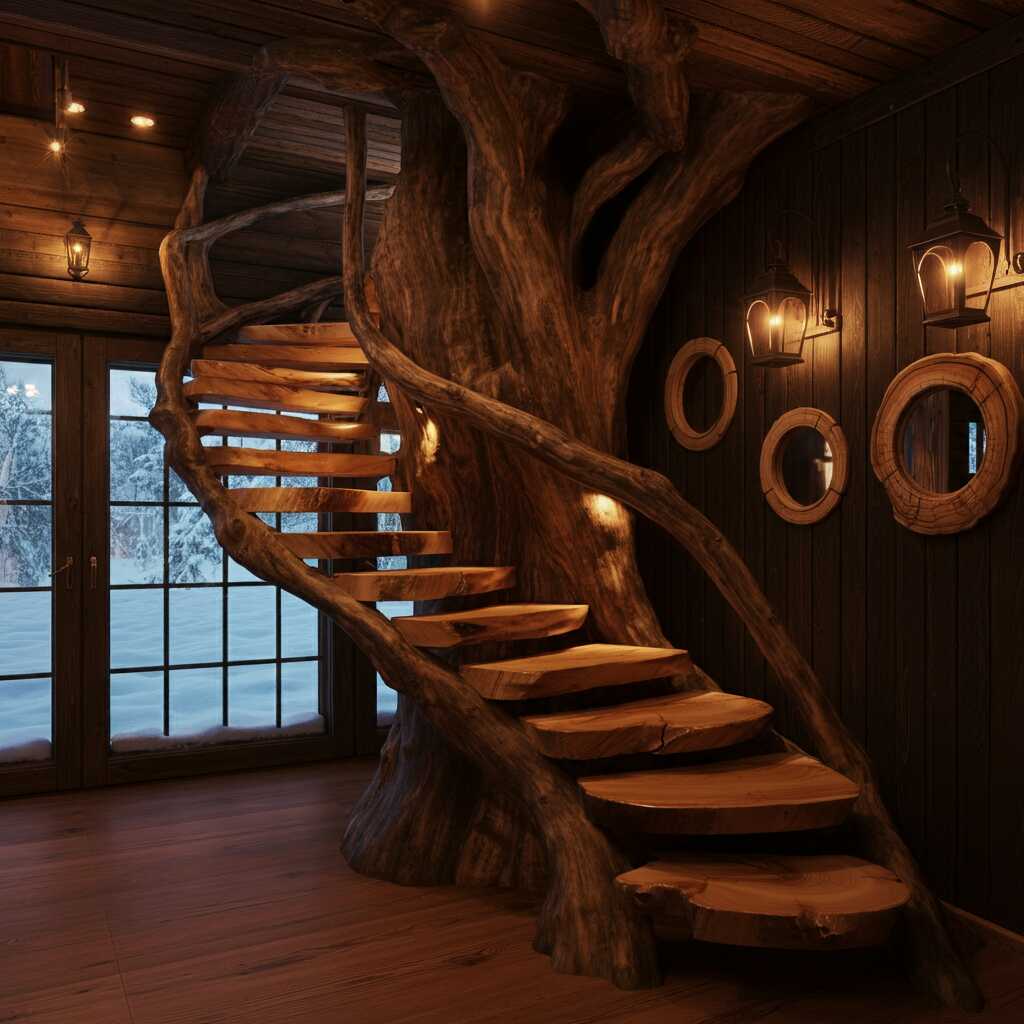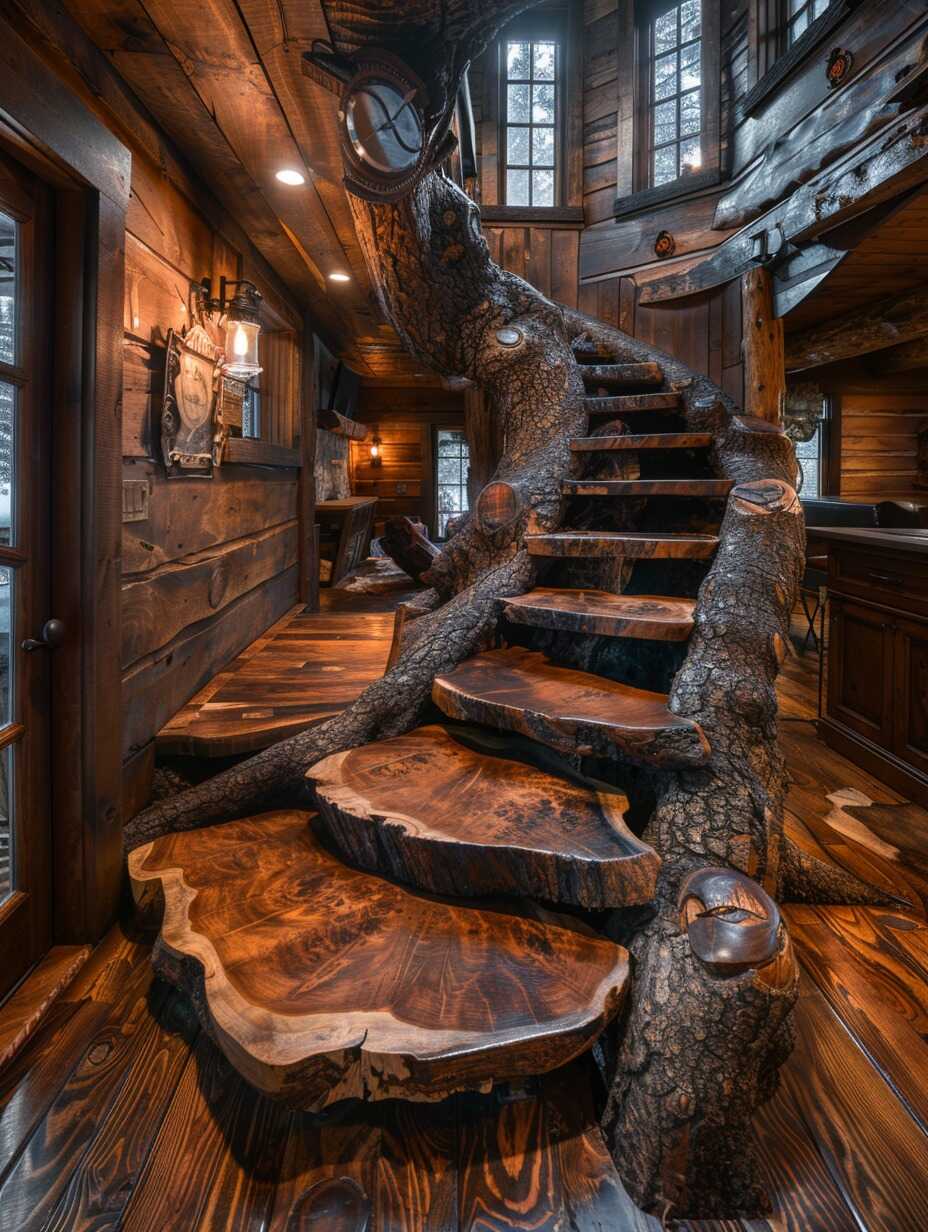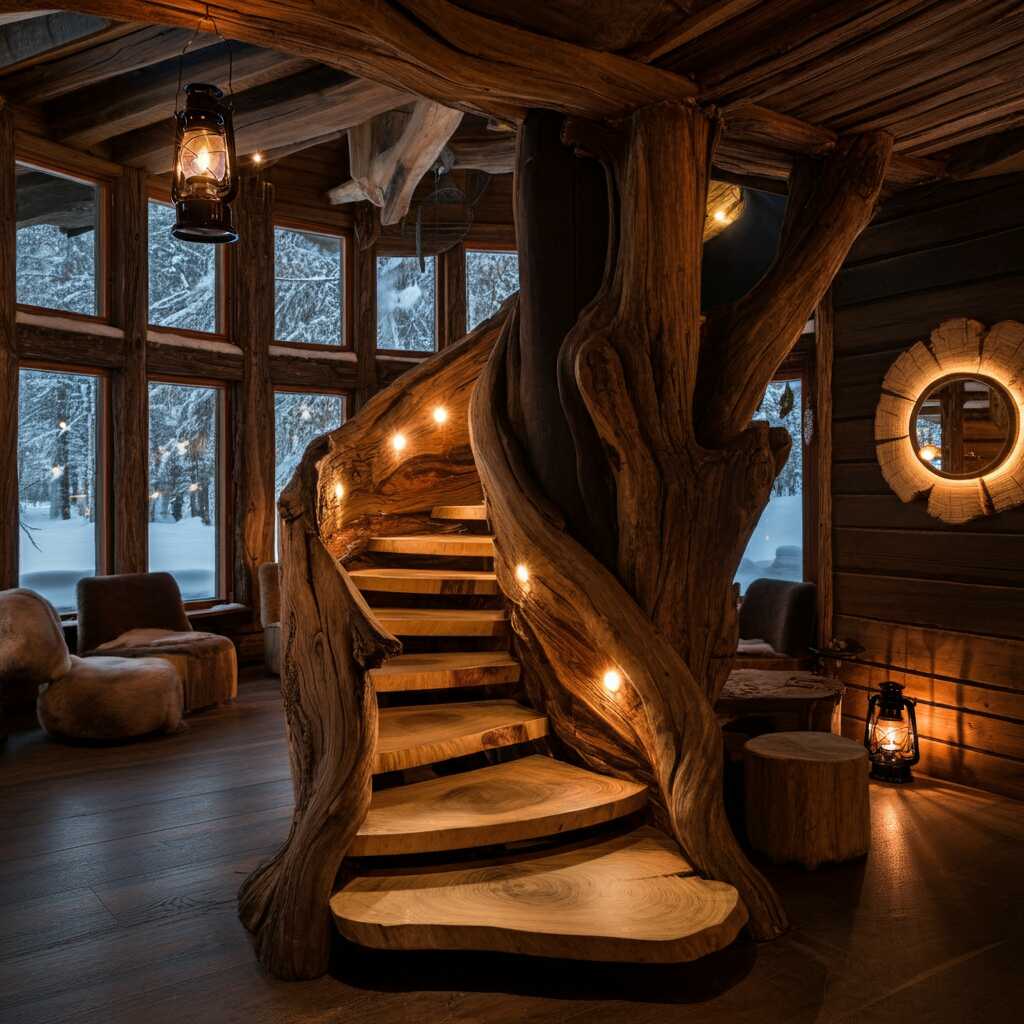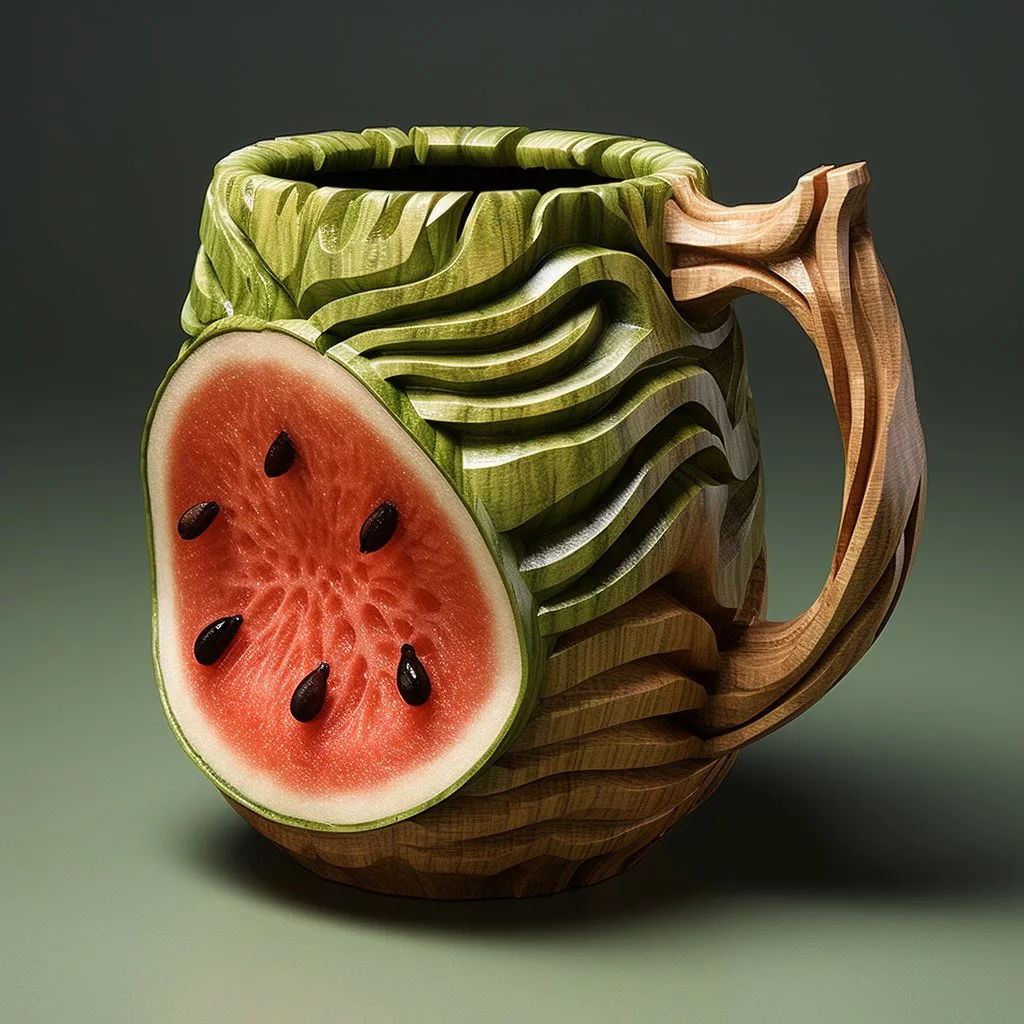Natural aesthetics have become a hallmark of modern design, merging the simplicity of nature with the sophistication of craftsmanship. Among the most captivating trends in rustic architecture is the use of stairs made from natural tree trunks. This fusion of raw materials and structural functionality delivers not only a staircase but also a sculptural masterpiece that brings warmth, elegance, and a touch of timelessness to any space.
Whether used in cozy cabins, luxurious mountain retreats, or even modern homes that want a rustic flair, tree trunk stairs are a testament to the ingenuity of design inspired by nature. This article explores the charm and practicalities of tree trunk stairs, covering their construction process, aesthetic benefits, and considerations for those seeking to integrate this feature into their homes.
Contents
The Appeal of Tree Trunk Stairs
A Harmonious Blend of Rustic and Refined
Tree trunk stairs embody rustic elegance, a design philosophy where natural, unprocessed materials are showcased for their inherent beauty. While rustic interiors are known for their warmth and natural elements, adding a tree trunk staircase elevates the concept. The rugged texture of bark, the organic curves of a trunk, and the polished surfaces of steps create a dynamic contrast that exudes both simplicity and sophistication.
These stairs offer more than just functionality; they are a focal point in a home. Their visual impact is immediate, turning an ordinary staircase into a conversation starter. Additionally, they create an inviting atmosphere, helping to ground the home in its natural surroundings.
Sustainability and Eco-Friendliness
One of the most appealing aspects of stairs made from tree trunks is their sustainability. Many of these designs repurpose fallen or reclaimed wood, giving new life to materials that would otherwise go to waste. Instead of relying on mass-produced materials, this design choice embraces eco-conscious living, showcasing how art and functionality can coexist in harmony with the environment.
When sourced responsibly, tree trunk stairs also reduce the carbon footprint associated with traditional building materials like concrete or steel. By integrating natural tree trunks, homeowners are making a statement about the value of sustainability in design.
Crafting the Perfect Tree Trunk Staircase
Design Considerations
The creation of a staircase made from tree trunks is a delicate blend of art and engineering. The natural shape and texture of each tree trunk pose both challenges and opportunities for customization. Before embarking on such a project, several factors need to be considered:
- Type of Wood: Hardwoods like oak, walnut, or maple are preferred for their durability and resistance to wear. Softer woods like pine may work but require extra care to withstand heavy foot traffic.
- Dimensions: The diameter of the tree trunk determines its suitability as a structural element. Thick, sturdy trunks are essential for ensuring the staircase’s stability.
- Aesthetic Vision: Homeowners must decide whether to leave the bark intact for a more rugged appearance or to strip and polish the wood for a refined look.
Construction Techniques
Building tree trunk stairs involves a meticulous process that combines traditional carpentry skills with modern technology. Here’s a step-by-step overview:
- Tree Trunk Selection and Preparation:
- The chosen tree trunks are inspected for integrity, ensuring they are free from rot or significant defects.
- Depending on the design, the trunks may be debarked, sanded, or left in their natural state.
- Cutting and Shaping:
- Each step is carefully cut from the trunk, preserving the natural grain and curves. For spiral or curved staircases, the wood must be shaped to fit the design.
- High-precision tools are used to maintain structural consistency while respecting the organic form of the wood.
- Structural Support:
- Tree trunk stairs must meet safety codes. Builders often combine the trunks with hidden metal reinforcements or concrete bases for added stability.
- Anchoring the staircase securely to walls or floors ensures long-term durability.
- Finishing Touches:
- To protect the wood, finishes like clear varnish or oil are applied. These not only enhance the natural beauty of the grain but also protect against wear and moisture.
- Additional elements, like railings, can be made from matching wood or contrasting materials like wrought iron for added visual interest.
Why Choose Stairs Made from Tree Trunks?
Unique Aesthetic Appeal
No two tree trunk staircases are alike. The uniqueness of each tree ensures that every staircase has its own personality, characterized by the distinct patterns of its wood grain, knots, and natural curves. This individuality makes it an art piece as much as a functional structure.
Seamlessly Integrating with Nature
Tree trunk stairs are particularly well-suited for homes in natural settings, such as forest cabins or lakeside retreats. They echo the environment outside, creating a seamless transition between the interior and exterior of the home. Even in urban settings, they offer a calming, organic element that contrasts beautifully with modern materials like glass and metal.
Durability and Longevity
When properly constructed and maintained, tree trunk stairs can last for decades. Hardwood varieties are naturally resistant to wear, and with the right treatments, they can withstand moisture, pests, and daily use. Their sturdy construction ensures that they remain a reliable feature in the home for years to come.
Maintenance and Care
While tree trunk stairs are durable, they do require regular upkeep to maintain their beauty and safety:
- Cleaning: Dust and debris should be removed regularly to prevent scratches on polished surfaces. A soft cloth and gentle cleaner are usually sufficient.
- Inspection: Periodic checks for cracks, rot, or loose steps are essential to ensure the staircase remains safe.
- Reapplication of Finishes: Depending on the level of use, protective finishes may need to be reapplied every few years.
- Humidity Control: Wood can warp or crack in extreme humidity changes. Using a dehumidifier in damp climates or a humidifier in dry environments can help preserve the integrity of the wood.
Inspiring Designs for Tree Trunk Stairs
Traditional Rustic Style
In traditional rustic designs, tree trunk stairs often feature unpolished wood with bark intact. These designs emphasize the raw, untamed beauty of nature, making them ideal for log cabins or countryside homes. The steps may be irregular, celebrating the imperfections of the wood, while the trunks act as both structural elements and decorative features.
Contemporary Elegance
For a more modern take, tree trunk stairs can be paired with sleek materials like glass railings or steel supports. The wood is often polished to a smooth finish, creating a clean, minimalist look. This approach works well in urban homes, adding warmth without overwhelming contemporary interiors.
Spiral and Freestanding Designs
Spiral staircases made from tree trunks are a stunning option for those looking to maximize visual impact. These designs require expert craftsmanship, as the natural curves of the trunk must align perfectly to create a cohesive spiral. Freestanding tree trunk stairs, on the other hand, can act as sculptural installations, adding drama and elegance to open spaces.
Conclusion
Stairs made from tree trunks are a beautiful blend of art, functionality, and sustainability. Their ability to transform a space into a warm, inviting, and elegant environment makes them a timeless choice for homeowners who value both nature and design.
From their unique aesthetic appeal to their durability and eco-friendliness, tree trunk stairs are more than just a structural feature—they are a statement of style and a testament to the harmony between humanity and the natural world.
By investing in this rustic yet sophisticated feature, homeowners can create a lasting legacy in their spaces—one that celebrates the enduring beauty of nature while embracing the ingenuity of craftsmanship. Whether nestled in the woods or standing proudly in a modern urban dwelling, stairs made from natural tree trunks are sure to captivate and inspire.

